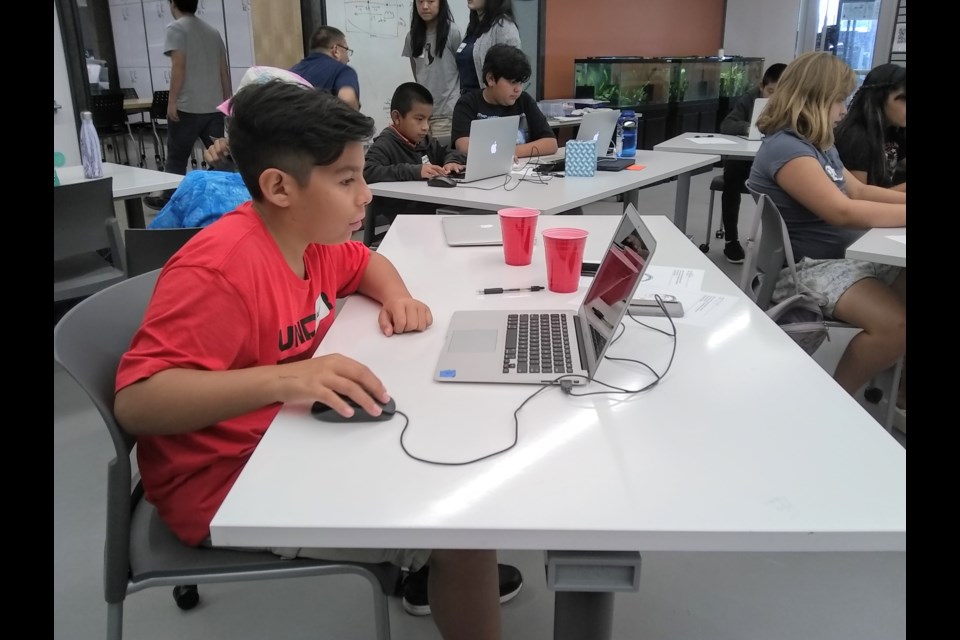Twelve-year-old Alan Bustos admits he was a bit surprised to find himself at Coding Camp, which started Monday at St. Vrain Valley School District’s Innovation Center.
“I was unexpectedly put into the camp. I didn’t know I was coming,” Alan said. “It was my mom, I think.”
Bustos and his fellow fifth through eighth grade campers learned Scratch — a kids’ computer programming language developed at the Massachusetts Institute of Technology.
Unlike adult programming languages — which require typing lines of code — Scratch offers a colorful drag-and-drop interface, according to the camp creators and instructors, Niwot High School seniors Hannah Piersol and Caitlyn Fong, both 17.
“It’s more kid-friendly. There’s a bigger focus on animation, music and games — which can grab the attention of younger kids,” Piersol said.
Piersol and Fong offered the no-cost camp as their CAS (creativity, activity and service) project, one of three core requirements of the International Baccalaureate diploma.
A CAS project is where we find ways to volunteer and give back to the community, Fong said.
“You should go to (coding camp) because it’s awesome. It’s got all these cool laptops, all this tech. The amount of stuff they have here is cool,” Bustos said.
For Piersol and Fong, Coding Camp has meant stepping into leadership.
“We had to take charge and design the curriculum ourselves, contact Mr. Reitzig to ask him to be our supervisor, we were designing flyers to attract students. We had meetings with the city of Longmont and a Hispanic organization,” Piersol said.
“We had to take into account a lot of things, such as the ages of the students and how much knowledge they have about computer science,” Fong said.
CAS projects ask IB students to address a global issue or problem, Fong said. The pair initially intended to offer a coding camp for women and then decided to widen participation to include all underrepresented students.
“Underrepresented” refers to students who may not have access to computers at home as well as to groups such as women, who are underrepresented in the computer science and cybersecurity fields, Fong said. “I found my enjoyment for computer science and engineering at the Innovation Center. I want to encourage other women to find their passion for STEM (science, technology, engineering and math) in the camp as well.”
“When I was younger, I had the opportunity to participate in camps like this. It helped me to find my passion, and I wanted to help others find out that computer science can be an exciting field for all kinds of people,” Piersol said.
Although students have years before they need to decide on a career, it is programs like this that can influence the path they take in life.
“Offering this to students at this age who haven’t coded before is formative. It makes them aware of opportunities, such as coding classes, in the upcoming years. For instance, when they’re in high school maybe they’ll do an internship. It puts them on a potential career pathway,” said Axel Reitzig, coordinator of innovation at SVVSD’s Innovation Center and coding camp supervisor.



